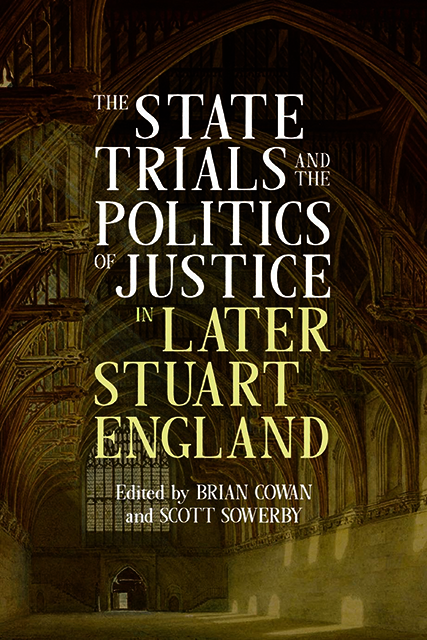1 - State Trials and the Rule of Law under the Later Stuarts and Early Hanoverians
Published online by Cambridge University Press: 14 January 2023
Summary
On 24 November 1681 a bill of indictment against the first earl of Shaftesbury for high treason came before a grand jury at the Old Bailey in London. Shaftesbury, one of the leading figures in the Whig movement to exclude Charles II’s brother and heir, the Catholic James duke of York, from the succession, had been arrested on 2 July and sent to the Tower of London, where he had been held ever since; although Shaftesbury had sued for habeas corpus, the judges declared they had no jurisdiction over prisoners held in the Tower. The case against the earl was not strong, resting as it did on the testimony of two informants to the supposed Irish Plot of 1680–81, whom the government itself admitted were perjurers, and a draft ‘Association’ allegedly found amongst Shaftesbury’s papers accusing York of complicity in the Popish Plot and engaging subscribers to do their utmost to prevent him from coming to the throne. Moreover, Shaftesbury was popular in the City – he had recently taken up citizenship himself as an expression of solidarity – and the government’s attempt to indict him did not go down well with his supporters and admirers. When the witnesses for the crown, having given their depositions, left to get some dinner at the nearby Fountain Tavern, a hostile crowd pursued them, yelling ‘Bogtrotters’ and ‘Perjured Rogues’. Titus Oates, the informer of the original Popish Plot in 1678, was standing at the door of the Fountain to block entry, boasting that he would fill the tavern with porters before the perjurers should get a table there. When the witnesses later made their way back to the Old Bailey, they were accosted by ‘thousands of people’ – so one of them later claimed – armed with ‘long poles, half-pikes and halberts’, who tried to stop them getting into the court. One of the leading witnesses, Stephen Dugdale, fearing for his own safety, decided to slip away rather than try to enter the building.
After evaluating all the evidence, the grand jury rejected the bill of indictment, endorsing it ‘ignoramus’, leaving Shaftesbury free to go. Egged on by Oates and the Whig sheriff Samuel Shute, the huge crowd that had gathered outside the Old Bailey cheered loudly.
- Type
- Chapter
- Information
- Publisher: Boydell & BrewerPrint publication year: 2021



